12 Best Perennials And Shrubs To Plant In The Fall Once Cooler Weather Arrives
Here’s what to plant when cooler weather arrives in your area.
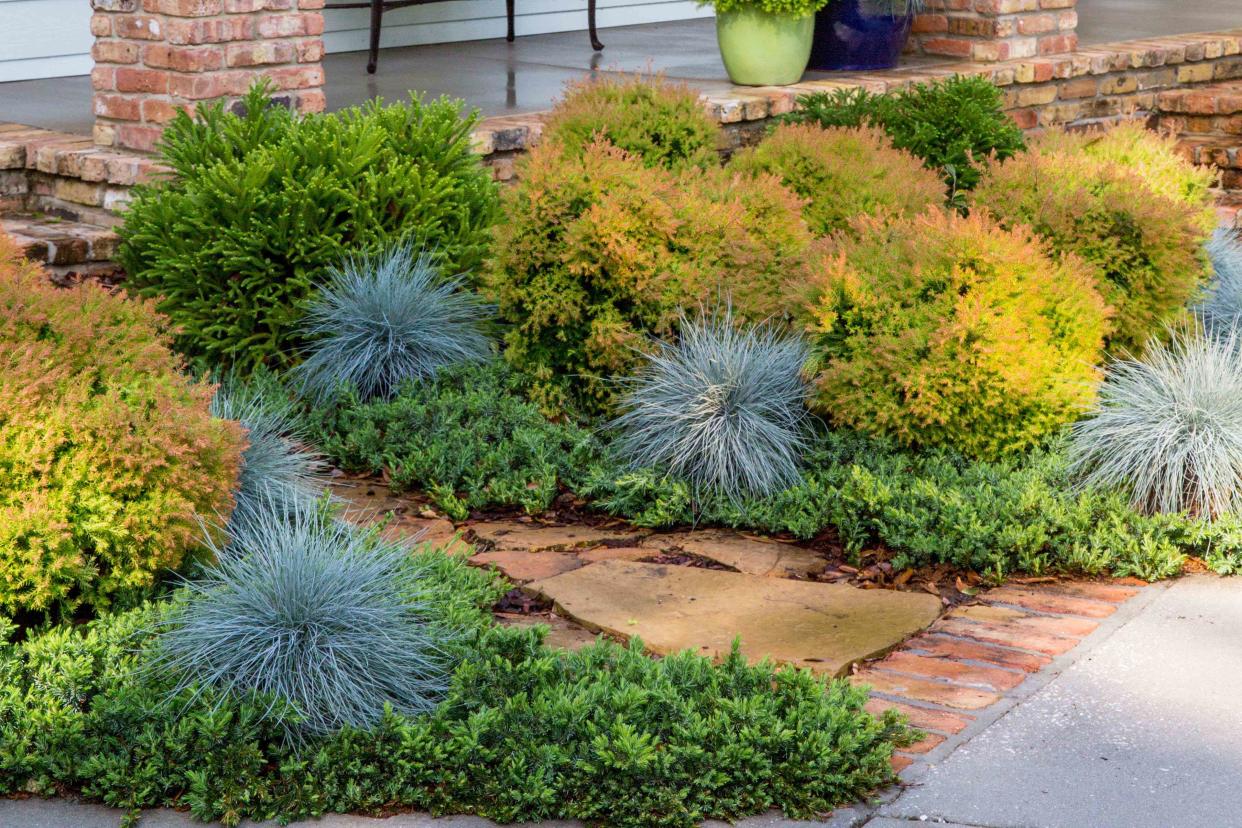
Mark Sandlin for Southern Living® Plant Collection.
Don’t put away your gardening tools just yet! Once the weather moderates, there’s still plenty of time to plant. In fact, fall actually is an ideal time for adding new perennials and shrubs to your garden to add beauty, privacy, and pollinator-friendly plants.
In the Southeast, the toughest growing season for plants is summer. “Fall planting is ideal in warm to hot climates because it provides the longest window of good growth conditions before challenging weather sets in,” says Stacey Hirvela, horticulturalist with Proven Winners ColorChoice Shrubs. “Fall planting gives the plant a good 8 months or so to get established and develop a good root system before summer’s heat can stress the plant.”
Plants also tend to be less stressed during transplant at this time. “The weather is cooler, and rainfall tends to increase, providing a natural water source,” says Mary Woolman, woody ornamental and edible product manager at Star Roses and Plants. “Also, most plants will be preparing for dormancy by rooting, rather than pushing new growth.”
The only caveat is that you may not want to plant broadleaf evergreens, such as rhododendrons and magnolias, too late in the season. “It’s okay to plant these at the beginning of fall, but I would not recommend planting them after about mid-autumn,” says Hirvela. “Broadleaf evergreens are especially susceptible to drying out over winter, even in mild areas.”
Most importantly, don’t forget to water your fall plantings. Plants still need watered regularly through fall and even throughout the winter if the weather is unusually dry, says Hirvela.
Ahead, the best perennials and shrubs to plant this fall:
Orange Jessamine
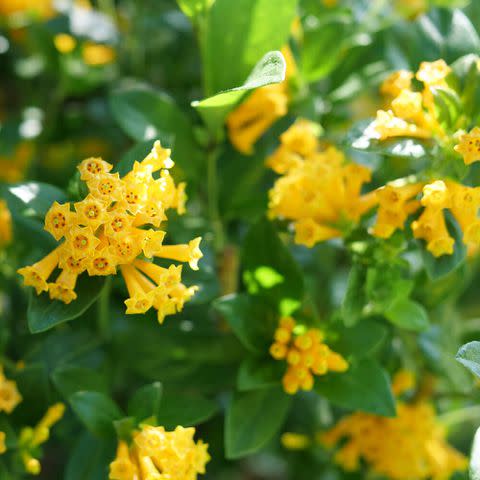
Proven Winners
Botanical name: Cestrum corymbosum
Sun exposure: Full sun to part shade
Soil type: Well-draining, any type
This tropical climbing evergreen vine is covered in clusters of tubular flowers that pollinators love. It flowers from spring to summer, and it’s also deer resistant.
Varieties for the South: Juiced Orange Jessamine
Lorapetalum
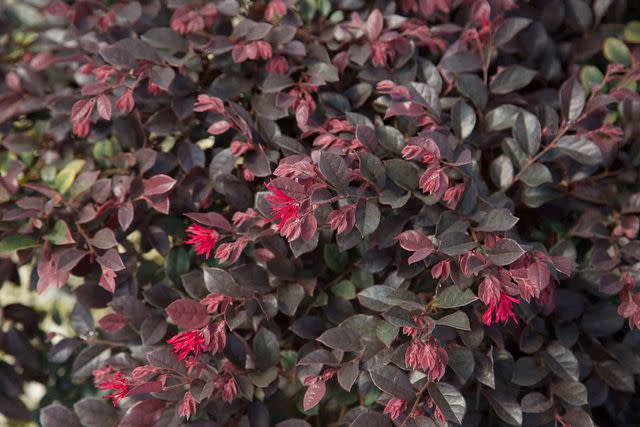
Southern Living Plant Collection
Botanical name:Loropetalum chinense
Sun exposure: Full sun to part shade
Soil type: Well-draining, rich
Lorapetalum has tiny fringed flowers in shades of pink or white, which give it the common name of Chinese fringe flower. Some types have gorgeous purple foliage. The flowers appear in late winter to early spring. Look for dwarf varieties of this shrub if you’re short on space.
Varieties for the South: Cerise Charm, Purple Daydream
Catmint
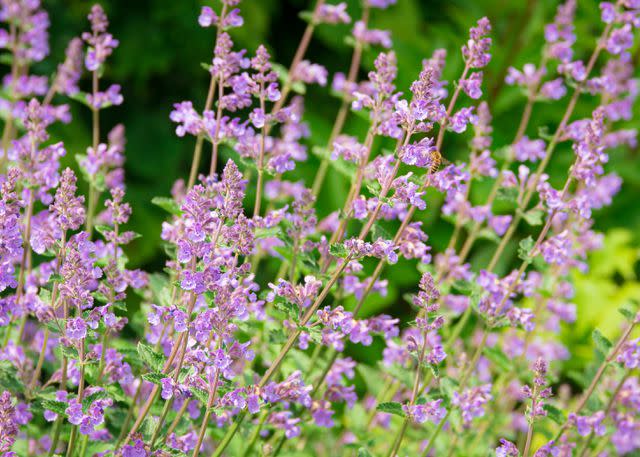
Getty Images
Botanical name: Nepeta spp.
Sun exposure: Full sun
Soil type: Well-draining,All types
Catmint is the ideal low-maintenance perennial for any garden setting. Available in heights ranging from 8 inches to 3 feet tall, the silvery-green foliage has a minty-spicy scent that deer and rabbits tend to leave alone. Spikes of pink or purple flowers appear for weeks in mid to late summer.
Varieties for the South: Walker’s Low, Six Hills Giant, Cat’s Pajamas
Firecracker Bush
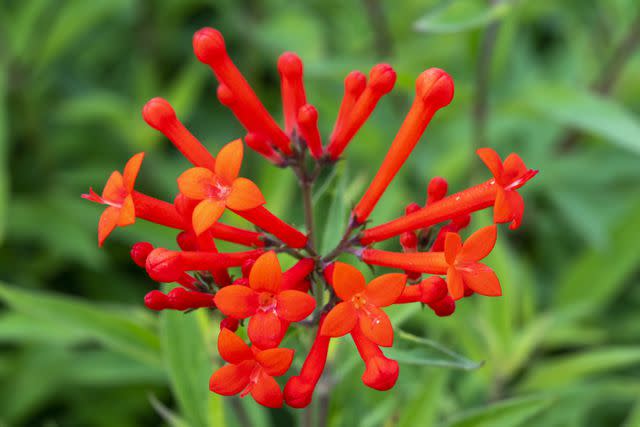
Botanical name: Bouvardia
Sun exposure: Full sun
Soil type: Well-draining, slightly acidic
Native to the Southwest, this heat-loving deciduous shrub blooms all summer without needing deadheaded. New varieties are more compact with gorgeous red-pink or scarlet blooms.
Varieties to try: Estrellita Little Star, Estrellita Scarlet
Agastache
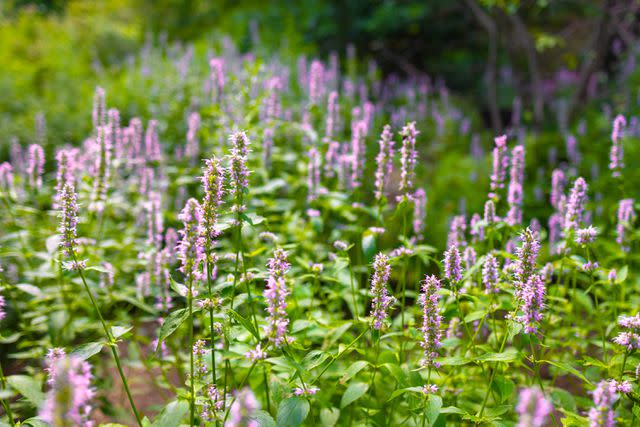
Getty Images / Catherine McQueen
Botanical Name:Agastache spp.
Sun Exposure: Full sun
Soil Type: Average, well-draining
Also known as hummingbird mint, this upright perennial has pretty spikes of flowers in shades of red, pink, coral, yellow, white, purple, or hot pink from summer to early fall. Pollinators adore it, and it’s heat and drought tolerant once established. Its scented foliage also is not particularly appealing to rabbits and deer.
Varieties to try: Royal Raspberry, Summerlong
Hydrangea
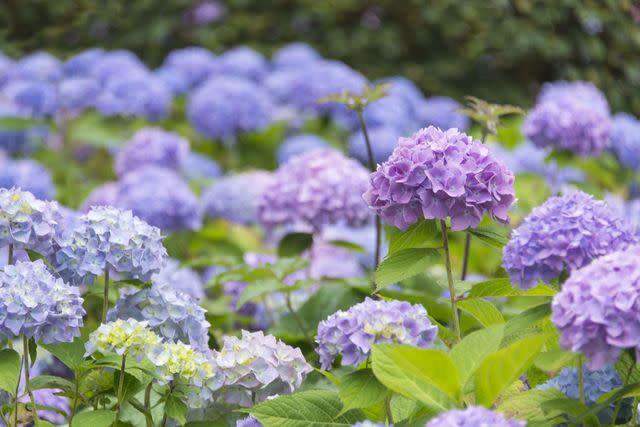
Getty Images
Botanical Name:Hydrangea spp.
Sun Exposure: Full sun to part shade, depending on the variety
Soil Type: Well-draining, slightly acidic
With so many varieties, you’ll find a hydrangea that’s just right in your garden. From compact types that reach just a foot or two to types that max out at 10 to 15 feet tall, hydrangeas offer a long bloom time from mid-summer to fall. The papery blooms stay intact until spring to provide winter interest.
Varieties for the South: Autumn Reprise, Let’s Dance Skyview, Fairytrail Bride
Tulbaghia
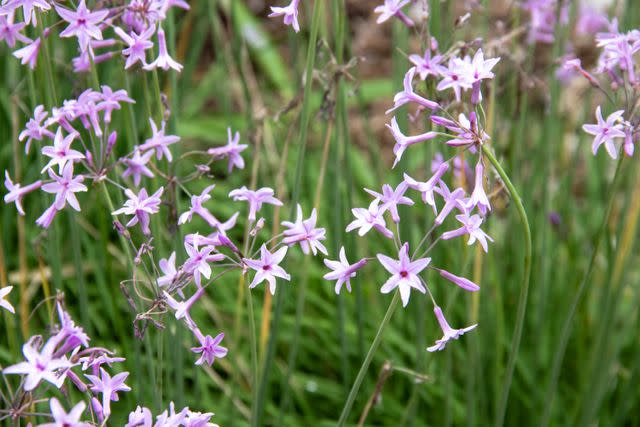
Getty Images
Botanical Name: Tulbaghia hybrid
Sun Exposure: Part shade
Soil Type: Well-draining, slightly acidic
Also known as society garlic, this striking perennial is a great addition to your landscape. With green shoots that have pink bases, purple flowers appear in early spring and intermittently the rest of the season. It makes a good border or container plant.
Varieties for the South: Flamingo
Arborvitae
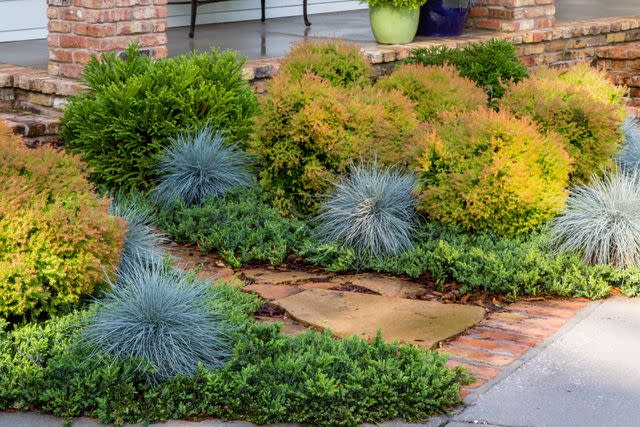
Mark Sandlin for Southern Living® Plant Collection.
Botanical Name: Thuja spp.
Sun Exposure: Full sun to part shade
Soil Type: All types
If you’re looking for a reliable, adaptable evergreen, you’ll find an arborvitae, or thuja, variety that works in your garden space. Thuja come in an array of sizes from petite types that reach only 2 feet tall and wide to giants that reach 40 feet tall. Some new cultivars, or cultivated varieties, take on pretty fiery or blue hues in fall and winter.
Varieties for the South: Fire Chief, Pancake
Salvia
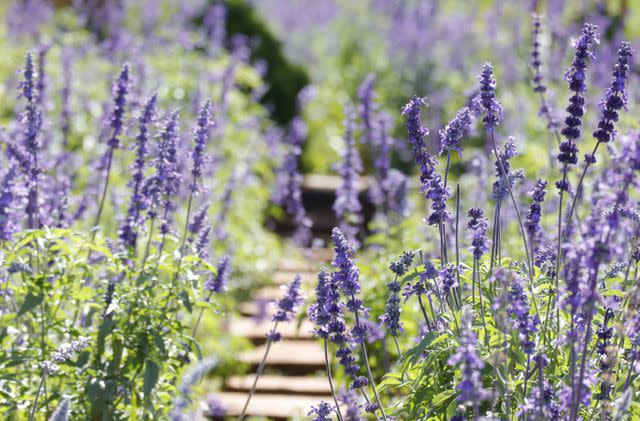
Getty Images
Botanical Name:Salvia spp.
Sun Exposure: Full sun to part shade
Soil Type: Average to poor, well-draining
Salvia, also known as sage, has purple, white, or pink tubular-shaped flowers which pollinators absolutely love. These deer-resistant perennials are an excellent low-maintenance addition to the garden for blooms from late spring to early fall, depending on the variety. Make sure to read the tag because there also are annual types.
Varieties for the South: Blue By You, Mirage Deep Purple
Shrub Rose
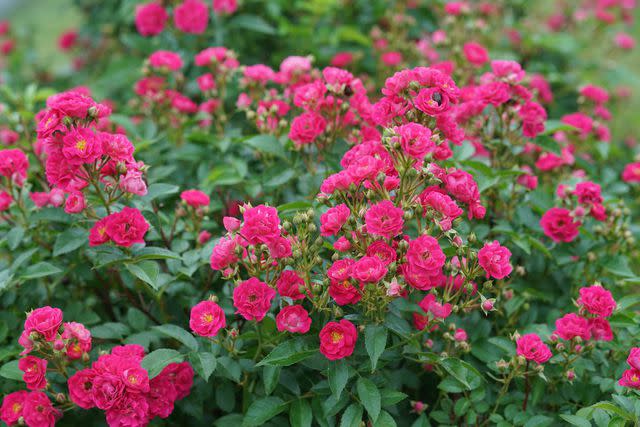
Getty Images
Botanical Name: Rosa spp.
Sun Exposure: Full sun
Soil Type: Average to rich, well-draining
Shrub roses are much hardier than you think, and they’ll give you months of low-maintenance color. Feed them a few times a growing season and deadhead spent blooms to keep the flowers coming until the first frost.
Varieties for the South: Knockout Orange Glow, Oso Easy Peasy
Lavender
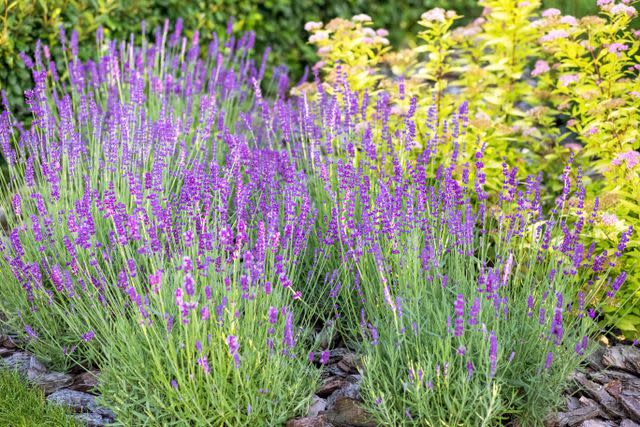
Getty Images
Botanical Name:Lavendula spp.
Sun Exposure: Full sun
Soil Type: Average to sandy, well-draining
Not all types of lavender love humidity, but if you choose the right lavender variety, you can enjoy the fragrant purple flowers and silvery foliage in your Southern garden. The gorgeous fragrance and scented foliage is deer and rabbit resistant.
Varieties for the South: Sweet Romance, Phenomenal
Weigela
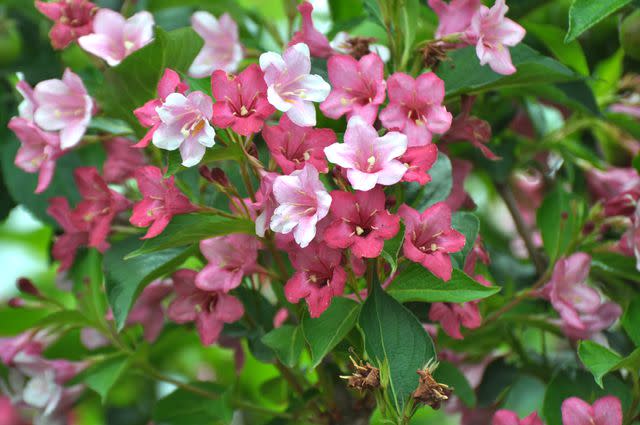
Getty Images
Botanical Name: Weigela spp.
Sun Exposure: Full sun to part shade
Soil Type: Well-draining, rich
Weigela are pretty flowering shrubs with pink, white, red, or yellow blooms that appear in spring. New reblooming types flower sporadically for the rest of the growing season, and some types have pretty variegated foliage, too. Hummingbirds are especially fond of this shrub.
Varieties for the South: Wine & Spirits
Related: 15 Showstopping Annuals To Fill Your Fall Garden With Blooms
For more Southern Living news, make sure to sign up for our newsletter!
Read the original article on Southern Living.
